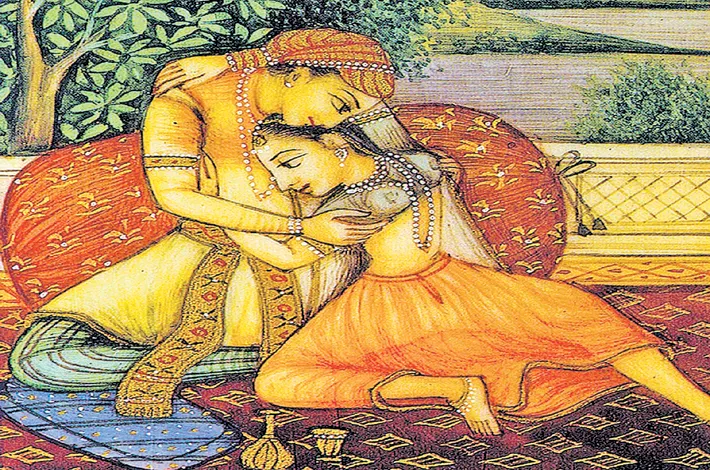The Enduring Relevance of Reading Vatsyayana’s Kamasutra
25-04-2025 12:00:00 AM

In a world increasingly defined by rapid technological advancements and shifting cultural norms, the ancient Indian text, Kamasutra by Vatsyayana, remains a profoundly misunderstood yet vital piece of literature. Often reduced to a mere manual of exotic sexual positions, the Kamasutra is, in truth, a comprehensive guide to living a fulfilling life, encompassing love, relationships, personal growth, and societal harmony. Written around the 3rd century CE, this Sanskrit treatise transcends its historical context, offering timeless wisdom that resonates with modern readers. Exploring the Kamasutra is not just an academic exercise but a journey toward understanding human connection, intimacy, and the art of living well. Here are compelling reasons why reading Vatsyayana’s Kamasutra is both necessary and enriching in today’s world.
Beyond Misconceptions: A Holistic Philosophy of Life
The Kamasutra is often mischaracterized as a salacious text focused solely on physical intimacy. However, only a small portion—roughly 20%—of the text is dedicated to sexual techniques. The remaining sections explore a broader spectrum of human experience, including courtship, marriage, family life, and personal conduct. Vatsyayana frames kama (pleasure) as one of the three pillars of a balanced life, alongside dharma (duty) and artha (material prosperity). This holistic approach underscores the importance of integrating pleasure into a meaningful existence without letting it overshadow moral or practical responsibilities.
Reading the Kamasutra challenges modern readers to rethink their relationship with pleasure. In an era dominated by instant gratification—whether through social media, consumerism, or fleeting romantic encounters—Vatsyayana’s text advocates for intentionality and mindfulness in pursuing desire. It encourages readers to cultivate relationships that are emotionally and intellectually fulfilling, rather than purely physical. By delving into the Kamasutra, one gains a nuanced perspective on balancing personal desires with societal expectations, a skill that remains critical in navigating today’s complex social landscape.
A Guide to Authentic Relationships
At its core, the Kamasutra is a manual for building and sustaining meaningful relationships. Vatsyayana dedicates significant portions of the text to the art of courtship, communication, and mutual respect between partners. Unlike modern dating culture, which often prioritizes superficial attraction or convenience, the Kamasutra emphasizes emotional intimacy and mutual understanding as the foundation of a lasting bond. It offers practical advice on everything from choosing a compatible partner to maintaining harmony in marriage, making it a surprisingly relevant resource for contemporary readers.
For instance, Vatsyayana’s insights into the psychology of attraction—such as the importance of shared values, intellectual compatibility, and emotional trust—align with modern relationship science. His emphasis on mutual consent and respect in intimate relationships is particularly striking, given the text’s ancient origins. In an age where discussions about consent and equality in relationships are at the forefront, the Kamasutra serves as a reminder that these principles have deep historical roots. Reading it fosters a greater appreciation for the timeless qualities that make relationships enduring and fulfilling.
Cultural and Historical Enlightenment
The Kamasutra is not just a guide to personal relationships but also a window into ancient Indian society, its values, and its worldview. By reading the text, one gains insight into the cultural and intellectual sophistication of the Gupta period, often considered a golden age of Indian civilization. The text reflects a society that viewed pleasure as a legitimate and essential aspect of human life, integrated with spiritual and ethical considerations. This contrasts sharply with the puritanical attitudes that later influenced global perspectives on sexuality, including in colonial India.
For modern readers, particularly those from non-Indian backgrounds, the Kamasutra offers an opportunity to engage with a non-Western perspective on love and intimacy. It challenges Eurocentric assumptions about relationships and sexuality, broadening one’s cultural horizons. Moreover, understanding the Kamasutra in its historical context helps dispel stereotypes about Indian culture as inherently conservative or repressed, revealing instead a tradition that celebrated human connection in all its forms.
Personal Growth and Self-Awareness
The Kamasutra is as much about self-discovery as it is about relationships with others. Vatsyayana encourages readers to understand their own desires, boundaries, and aspirations. The text’s detailed discussions of personal grooming, social etiquette, and emotional intelligence highlight the importance of self-care and self-awareness in fostering healthy relationships. In today’s fast-paced world, where burnout and disconnection are common, these lessons are invaluable.
Moreover, the Kamasutra invites readers to approach intimacy with curiosity and openness. It encourages experimentation and communication, not just in physical intimacy but in all aspects of life. By reading the text, individuals can learn to embrace vulnerability, communicate their needs effectively, and approach relationships with confidence and authenticity. These skills are essential for personal growth and for building meaningful connections in any era.
Relevance in the Modern World
In an age of dating apps, hookup culture, and evolving gender dynamics, the Kamasutra offers a refreshing counterpoint. It reminds us that intimacy is an art form, requiring patience, respect, and creativity. Its emphasis on mutual satisfaction and emotional connection challenges the transactional nature of many modern relationships. Additionally, the text’s inclusive approach to diverse forms of desire and relationships resonates with contemporary discussions about sexual orientation and gender identity, making it surprisingly progressive for its time.
The Kamasutra also has practical applications in addressing modern challenges. For couples seeking to rekindle passion or navigate long-term relationships, its advice on maintaining excitement and communication is timeless. For individuals exploring their own identities, the text’s non-judgmental exploration of desire offers a safe space for reflection. Even for those not in romantic relationships, the Kamasutra provides wisdom on living a balanced, fulfilling life.
Conclusion
Vatsyayana’s Kamasutra is far more than an ancient curiosity—it is a profound and practical guide to living well. By reading it, we gain access to timeless wisdom about love, relationships, and personal growth, presented in a way that challenges modern assumptions and enriches our understanding of human connection. In a world that often trivializes intimacy or reduces it to physicality, the Kamasutra reminds us of the beauty and complexity of desire, urging us to approach it with mindfulness and respect. Whether you seek to deepen your relationships, broaden your cultural perspective, or simply live more intentionally, the Kamasutra is a text worth exploring. Its lessons, rooted in ancient wisdom, remain as relevant today as they were centuries ago, offering a roadmap to a richer, more connected life.








